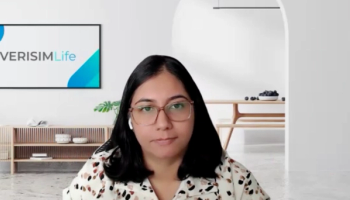
Rural Older Adults With Generalized Anxiety Disorder Benefit From Telephone Therapy
Older adults in rural areas face a number of barriers to getting treatment for mental health issues, such as generalized anxiety disorder, but the use of telephone-delivered cognitive behavioral therapy can yield significant results.
Although generalized anxiety disorder (GAD) is a fairly common anxiety disorder in older adults, access to treatment may be limited. However, the use of telephone-delivered cognitive behavioral therapy (CBT-T) significantly reduce worry and symptoms, according to a study
GAD causes excessive and uncontrollable worry accompanied by restlessness, fatigue, poor concentration, irritability, muscle tension, and/or sleep disturbance, and is associated with poor quality of life, increased healthcare utilization, impaired memory, and potentially increased morbidity and mortality.
Unfortunately, there are a number of barriers older adults face when it comes to getting treatment, such as mobility and transportation limitations and lack of mental health professionals in certain rural counties.
Researchers with Wake Forest School of Medicine recruited 141 participants aged 60 years and older living in rural counties in North Caroline. The participants were randomized to CBT-T or telephone-delivered nondirective supportive therapy (NST-T).
CBT-T participants received 9 to 11 weekly 50-minute telephone sessions that addressed recognition of anxiety symptoms, relaxation, cognitive restructuring, the use of coping statements, problem solving, worry control, behavioral activation, exposure therapy, relapse prevention, sleep, and pain. NST-T participants received 10 weekly 50-minute telephone therapy sessions that provided a high-quality therapeutic relationship where participants could share their feelings but did not provide advice, suggestions, or coping methods.
Almost 75% of participants in CBT-T and 81% in NST-T competed the required number of sessions. At 4 months’ follow up, the participants in the CBT-T group showed significantly greater decline in worry severity, in GAD symptoms, and in depressive symptoms, but no significant difference in general anxiety symptoms.
Not only was telephone-delivered psychotherapy successful in overcoming barriers to mental health treatment facing older adults living in rural areas, but it was well liked. In addition to a high adherence rate, the researchers found that satisfaction was high among participants.
“We found that both treatments reduced symptoms of worry, depression, and GAD,” the authors wrote. “However, CBT-T was superior to NST-T, resulting in a significantly greater reduction in these symptoms.
Newsletter
Stay ahead of policy, cost, and value—subscribe to AJMC for expert insights at the intersection of clinical care and health economics.





























































